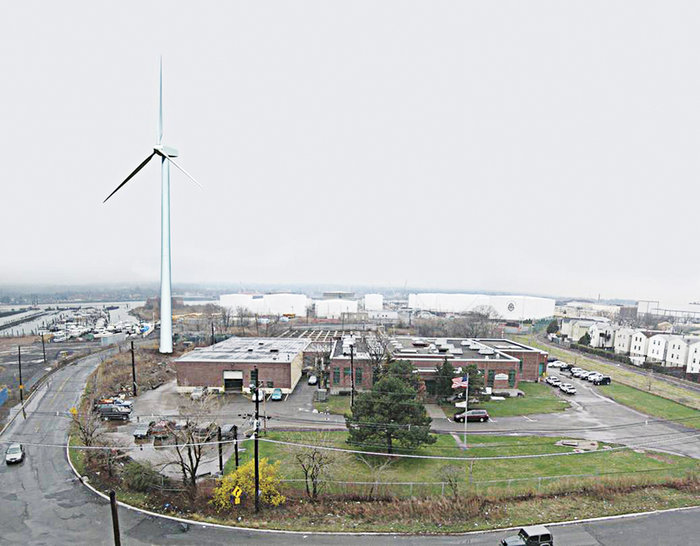Construction of Bayonne’s first windmill began in late November, promising to help provide power to run some of the city’s sewerage operations.
Contractors began construction of the base for the windmill at the foot of the Oak Street sewerage pumping station.
Steve Gallo, executive director of the Bayonne Municipal Utilities Authority, said the project broke ground with the hopes of being completed at some point in mid-2012.
The project has been in the works for more than three years. With a combination of $2.3 million in federal grants and about $1 million in rebates from the New Jersey Board of Public Utilities, the project has the potential to cut operations costs in the city.
The project may also be eligible for funds through the federal American Recovery and Reinvestment Act.
“We’re finally underway,” Gallo said, noting that the windmill would harness air currents off New York Bay to generate power to run the Oak Street pump station.
“This is something we see as something extremely beneficial to the city.” – Steve Gallo
____________
Earlier this year, the BMUA awarded the construction contract to Fai-Gon Electric of Piscataway for the construction of the 260-foot tower.
Gallo said the windmill could save the city as much as $8 million over the next 25 years (or about up to $250,000 per year), and would provide revenue through the sale of Wind Renewable Energy Credits (Wind RECs).
Energy from the wind turbine will be used to power the authority’s six 250 horsepower pumps – which move sanitary sewage to the Passaic Valley Sewage Commissioners system in Newark – and to pump stormwater during rain events. Because sewage flows and storm water events can and do vary, it is difficult to pinpoint exactly how much energy will be saved at any given time. But the energy purchase avoidance benefit can be predicted to be substantial.
“We pump sewage around the clock, so we’ve got pumps that are running continuously. Anything that can be done to reduce our electricity costs is helpful,” Gallo said.
